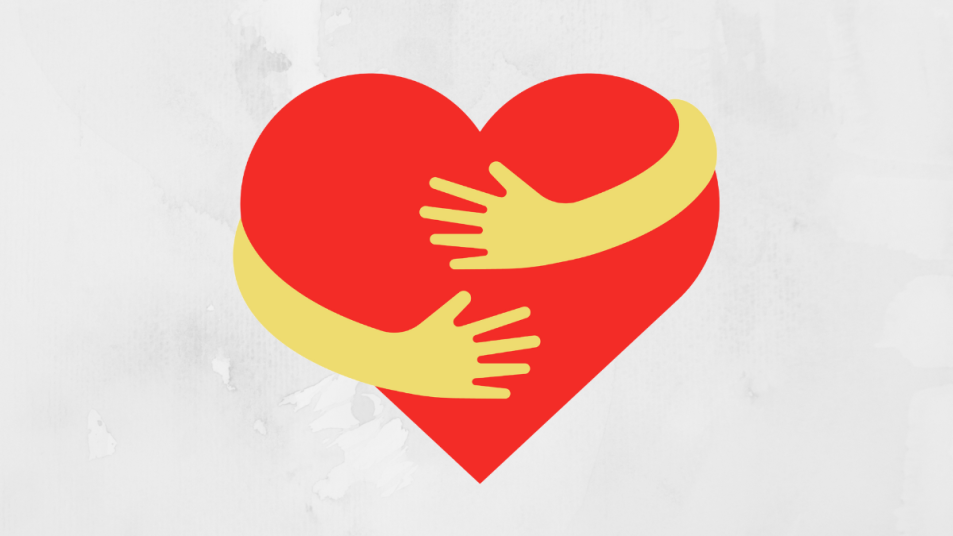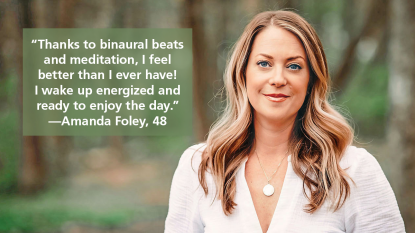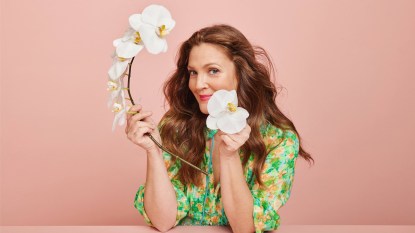Do You Have What It Takes To Be a Professional Cuddler?
It requires training, solid boundaries, and a lot of heart.

In the search for new and exciting ways to make money, a unique side hustle is gaining traction in the US: professional cuddling. And it’s exactly what it sounds like. A client pays a certified cuddler to cuddle with them for about an hour, usually in the privacy of the professional cuddler’s own home or another space they’ve chosen. While it might sound strange and maybe even a little dangerous for the professional, certified cuddlers argue that the job fulfills a human need — one that many people are lacking in the aftermath of the pandemic.
“It’s touch therapy,” says Ella Amorim, a 47-year-old professional who works with a company called Cuddlist. Cuddlist’s website describes it as such: “Much like yoga, meditation, and mindfulness, professional therapeutic touch through cuddling is healing and transformative when it happens in a respectful and emotionally safe way.”
If this sounds like a side gig you’d be interested in trying, take note: Cuddlers take their jobs very seriously, and most don’t do it just for the money. To gain a better understanding of what sessions are like, what qualities make for a successful professional cuddler, and what you need to know before you try it, we reached out to two Cuddlists: Chinello Ifebigh, 47, from The Netherlands, and Ella Amorim, 47, from New York. Read nine pieces of their insight about the process below.
1. There is a certification process.
Every professional cuddle company requires an application process to make sure you are serious about the position and would be a good fit. At Cuddlist, this involves a training program for potential cuddlers (for a one-time payment of $149), which you can complete at your own pace. “Each section of training covers a specific subject, and there are videos and written materials that go with each subject,” Amorim explains. “After each section, you study, then take a little test to move onto the next phase.”
Ifebigh says she appreciated the flexibility of the training program, because she was working upwards of 80 hours a week at the time. “It took me a year to complete the training, because I was a business owner,” she explains.
2. You must pay several different fees.
As previously mentioned, the training program costs $149. But that’s not the only charge — in order to receive your certification, you must pay another fee of $249. Lastly, in order to remain a Cuddlist, you must pay a $39.99 monthly fee. This is called the Cuddlist membership, and it keeps your profile on the website and gives you access to the Cuddlist network and community. The membership also gives you access to continuing education and mentoring programs.
Other companies have different charging systems. Cuddle Sanctuary, for instance, charges $25 for the application, and then $1,997 for a six-week training program, which includes support calls from live practitioners and a business strategy course. If you are serious about becoming a professional cuddler, check out all the training programs available before you make a decision.
3. You must screen your potential clients.
Amorim and Ifebigh agree that boundaries are a top priority before, during, and after a cuddle session. Ifebigh says she has clients undergo up to three rounds of screenings before she agrees to a cuddling session. Screenings involve a questionnaire (provided by Cuddlist), digitally signing a code of conduct, and one or more video chats. During a video chat, Ifebigh asks the potential client questions about their background. “I ask, ‘what made you come to my profile? and ‘What are you looking for?’ From there, I find out if it’s going to be a good fit or not,” she explains.
“I’m looking to see if the client understands that this is a therapy session,” Amorim says. “It’s a platonic session. It is not a date. Sometimes, they think they can negotiate things that are outside of my comfort zone, or if they offer me more money, the session will become sexual.” Amorim says that she doesn’t entertain these potential clients, and has no problem saying no to them. “It’s usually very easy to spot from the beginning,” she adds.
4. You must set strict boundaries.
Ifebigh believes that it’s extremely important to let her clients know her boundaries during the screenings and cuddle sessions. “There is a lot of discourse about safety during the screenings,” she says. “And during the first five minutes of the cuddle session, I discuss safety. I give the client a small tour of my working space and studio, and give them information about the environment.”
These precautions seem to have helped Ifebigh greatly. “In all my years of giving sessions, I have never once felt unsafe or had clients who told me they felt unsafe,” she adds. “And I think it’s because my screening process is like a fine-toothed comb. I have managed to discern only people that I feel would be a good match.”
Amorim notes that she had a bit of a rocky start with her boundaries. “I had more problems in the beginning… I had sessions with clients who turned out not to be a good match.” Amorim didn’t go into details, but said things got better when her screenings got more rigorous. “After that, I learned how to screen them properly,” she says. “And now, we have wonderful sessions and I don’t ever feel unsafe.”
As for the client’s safety, Amorim says each session is flexible based on what the client needs. “I don’t do the same thing for every client. If it’s a first-time client, we sit down and have a conversation before the touch therapy. I find out what the person needs and conduct the session from there, and allow it to run organically. I’m very intuitive… I’m usually pretty good at making people feel comfortable very quickly.”
5. You have support if anything goes wrong.
In the event that a session does not go as planned (i.e. a client does not follow the Cuddlist code of conduct), Cuddlist has a feedback form where you can report issues. Once you fill it out, a representative will reach out to you to offer you further support.
Amorim also notes that there is a Facebook group for Cuddlists. “We’re all connected, all over the country. And now there are different people around the world in the group as well,” she says. “We have a very tight knit community … whenever anyone has a problem, we post there. You might say, ‘I’m having issues with this,’ and everyone comments and helps out.”
6. You will need a space in your home (or a rented space) for cuddle sessions.
Amorim notes that most clients will want to visit your home, rather than have you visit theirs. “The majority of clients come to me because they live in a situation where they cannot have me over,” she says. “I have a lot of married clients and younger clients who live with their parents. On rare occasions, I go to the client’s house.”
Ifebigh says all her sessions are conducted at her home. “When I first started, I used to conduct sessions in an office setting — and I think people felt a little shy and uncomfortable in that space,” she shares. “But now that I have a working space at home, in my garden house, my clients love it. It’s in the middle of trees and plants and flowers… so I think that has a calming effect.”
7. It helps to be a good listener and non-judgmental.
According to Ifebigh, most of her sessions become a mixture of touch therapy and talk therapy. “I love listening to people,” she says. “There is a saying: ‘When you speak, you already say things that you know, and when you listen, there’s always a chance you will learn something new.’ And I have I have a lot of life experience, which I think makes me extra attuned to people and want to listen to their experiences and walks of life.”
Amorim adds that having a non-judgmental attitude and an appreciation for in-depth conversations goes a long way. “What attracted me to the work was that I would get to know someone in a more intimate space,” Amorim says. “I really like one-on-one interactions. I like working with people in depth — I hate small talk. I like getting into real conversations and things that are important. And I think when you are in an intimate space with someone, so much comes up, especially when you are non-judgmental … and that creates a very nurturing environment in which the client can open up, so the work is not just about touch.”
8. Expect to have different clients with different needs, and a few regulars.
Amorim and Ifebigh state that they both have had hundreds of clients and a few regulars — between 10 and 20. “I might be seeing 20 regularly at any given time,” Amorim says. “Some clients see me once a week, others travel from out of town and see me twice a year. And then there are people I see sporadically, when they feel that they need a session.”
Ifebigh mentions that some of her clients require very particular care because they have disabilities. “I have had some clients with hypersensitivity or some form of autism, and these clients also have regular counselors,” she says. For these clients, Ifebigh believes touch therapy plays a small but crucial role in a larger, comprehensive treatment plan.
9. Understand that most clients are men.
“Most clients are male,” Ifebigh confirms. “I think that that’s the same for other female professional cuddlers.” Indeed, Amorim also notes that most of her clients are male. Why might this be?
Ifebigh believes it has to do with the ways in which men and women are socialized. “Women have their social needs met more easily, because I think that women have an easier time relating to each other and showing affection,” she theorizes. “Also, it’s a little bit more difficult for men to seek non-sexual affection or to navigate their way around non-sexual affection.”
Ifebigh estimates that about eight out of every 10 clients are male. She has also noticed an upsetting pattern with her female clients. “Unfortunately, all my female clients have been victims of sexual abuse or violence. It’s really sad to say, but they all have had to deal with some form of physical or sexual trauma.” Ifebigh notes that she always encourages clients with a history of trauma to seek professional talk therapy.
“Sometimes, clients will need other kinds of help,” Amorim agrees. “I sometimes recommend a holistic therapist, a psychologist, or a psychiatrist, or I recommend that they go to couples therapy. All those things are important. But I think Cuddlists can work in conjunction with those treatments. It’s not one or the other.”
The Takeaway
Ultimately, being a professional cuddler isn’t easy — it involves a rigorous training program and potentially draining touch therapy sessions. However, it’s a job that Cuddlists find very rewarding. “Professional cuddling is somewhat stigmatized, because I think there is a misunderstanding of what it is,” says Amorim. “It’s a much-needed service. There are a lot of people who are touch deprived and completely isolated … You’re not going to cuddle with your psychologist. But once people understand what it is and how helpful it can be, they have amazing experiences that are really transformative … I’ve seen people have wonderful breakthroughs.”
“You see your humanity in someone else,” Ifebigh agrees. “I always hear people say, ‘how can you cuddle with a stranger, someone you don’t know?’ But when you look into someone’s eyes, you see a reflection of yourself. And that makes such a difference for me.”










